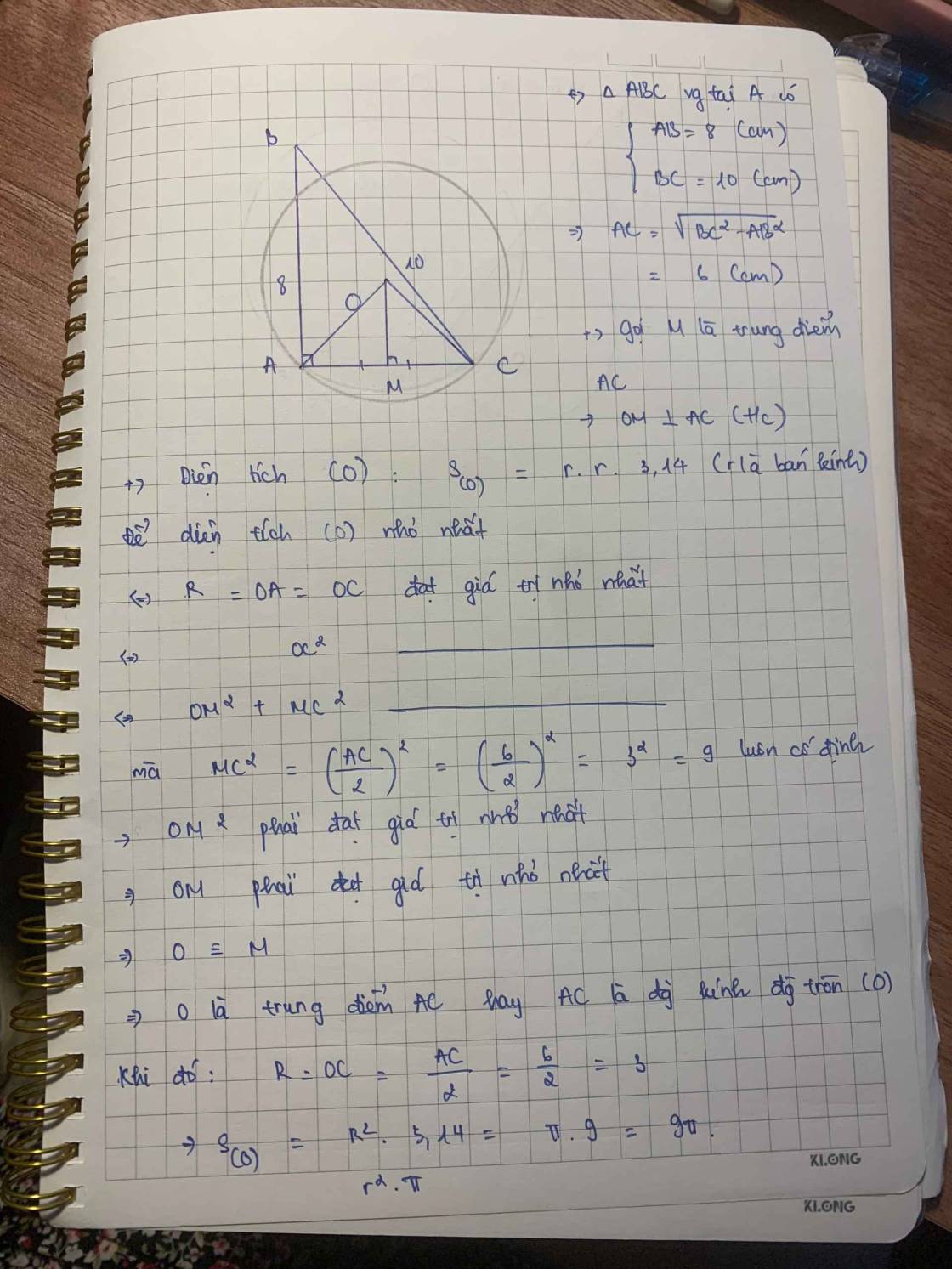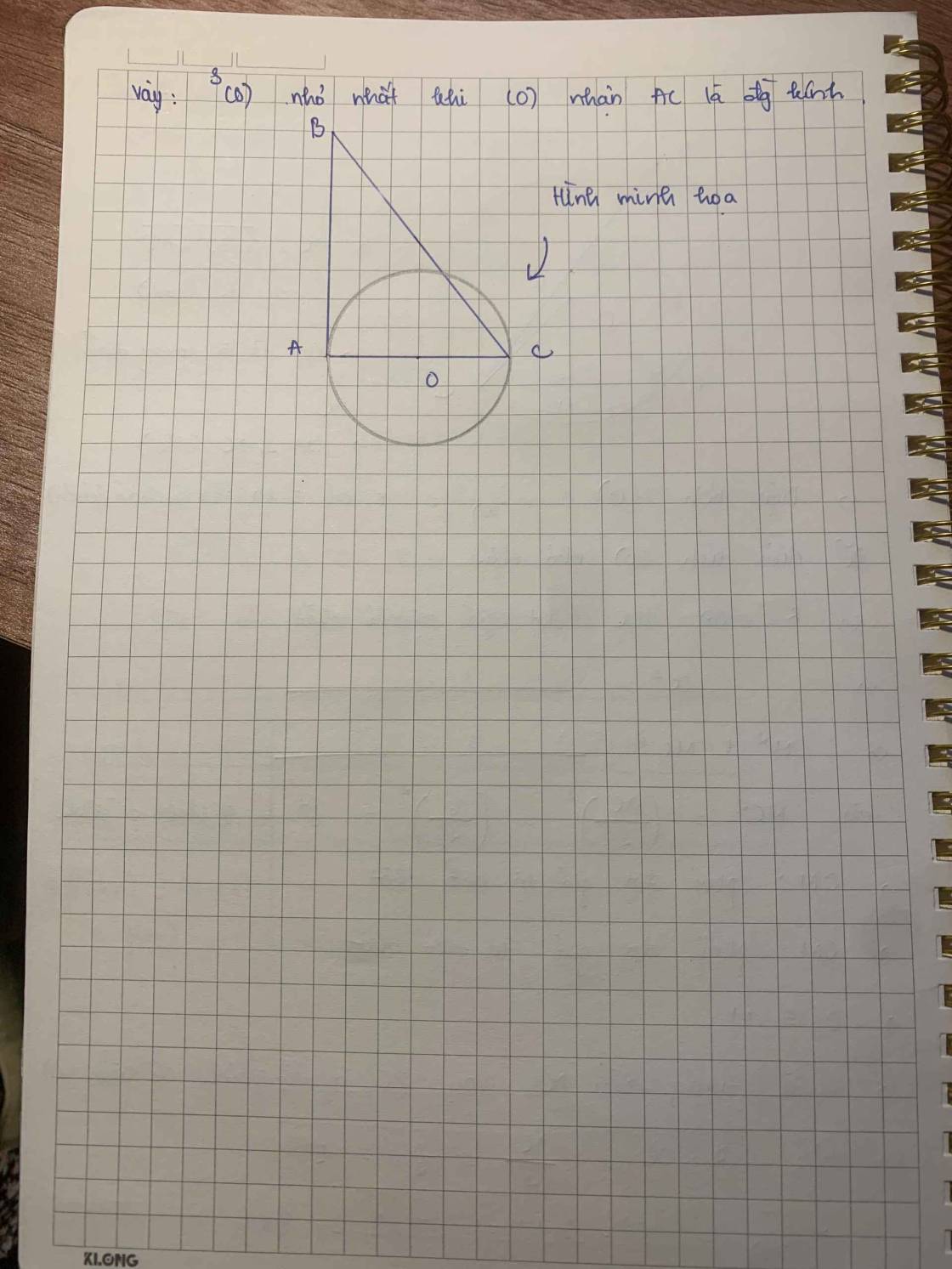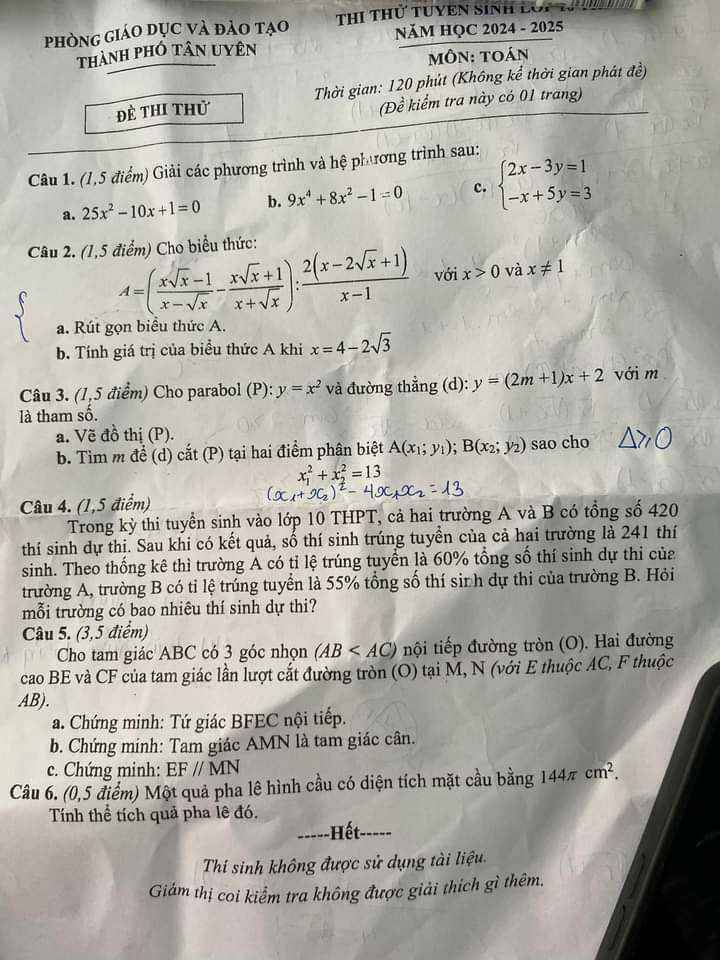
Hãy nhập câu hỏi của bạn vào đây, nếu là tài khoản VIP, bạn sẽ được ưu tiên trả lời.


a) \(\left(x-2\right)\left(2x+1\right)=0\)
\(x-2=0\) hoặc \(2x+1=0\)
*) \(x-2=0\)
\(x=2\)
*) \(2x+1=0\)
\(2x=-1\)
\(x=-\dfrac{1}{2}\)
Vậy \(S=\left\{-\dfrac{1}{2};2\right\}\)
b) \(\left(3x+4\right)\left(9-2x\right)=0\)
\(3x+4=0\) hoặc \(9-2x=0\)
*) \(3x+4=0\)
\(3x=-4\)
\(x=-\dfrac{4}{3}\)
*) \(9-2x=0\)
\(2x=9\)
\(x=\dfrac{9}{2}\)
Vậy \(S=\left\{-\dfrac{4}{3};\dfrac{9}{2}\right\}\)
c) \(\left(x+7\right)\left(\dfrac{x+5}{2}-\dfrac{4x}{3}\right)=0\)
\(\left(x+7\right)\left[3\left(x+5\right)-2.4x\right]=0\)
\(\left(x+7\right)\left(3x+15-8x\right)=0\)
\(\left(x+7\right)\left(-5x+15\right)=0\)
\(x+7=0\) hoặc \(-5x+15=0\)
*) \(x+7=0\)
\(x=-7\)
*) \(-5x+15=0\)
\(-5x=-15\)
\(x=\dfrac{-15}{-5}\)
\(x=3\)
Vậy \(S=\left\{-7;3\right\}\)
d) \(\left(x+3\right)\left(2x+3\right)\left(x-5\right)=0\)
\(x+3=0\) hoặc \(2x+3=0\) hoặc \(x-5=0\)
*) \(x+3=0\)
\(x=-3\)
*) \(2x+3=0\)
\(2x=-3\)
\(x=-\dfrac{3}{2}\)
*) \(x-5=0\)
\(x=5\)
Vậy \(S=\left\{-3;-\dfrac{3}{2};5\right\}\)

Câu 1:
a.
$25x^2-10x+1=0$
$\Leftrightarrow (5x-1)^2=0\Leftrightarrow 5x-1=0$
$\Leftrightarrow x=\frac{1}{5}$
b.
$9x^4+8x^2-1=0$
$\Leftrightarrow (9x^4-x^2)+(9x^2-1)=0$
$\Leftrightarrow x^2(9x^2-1)+(9x^2-1)=0$
$\Leftrightarrow (9x^2-1)(x^2+1)=0$
$\Leftrightarrow (3x-1)(3x+1)(x^2+1)=0$
\(\Leftrightarrow \left[\begin{matrix} 3x+1=0\\ 3x-1=0\\ x^2+1=0\end{matrix}\right.\Leftrightarrow \Leftrightarrow \left[\begin{matrix} x=\frac{-1}{3}(\text{chọn})\\ x=\frac{1}{3}(\text{chọn})\\ x^2=-1<0(\text{loại})\end{matrix}\right.\)
c.
\(\left\{\begin{matrix}\ 2x-3y=1\\ -x+5y=3\end{matrix}\right.\Leftrightarrow \left\{\begin{matrix}\ 2x-3y=1\\ -2x+10y=6\end{matrix}\right.\)
$\Rightarrow (2x-3y)+(-2x+10y)=1+6$
$\Leftrightarrow 7y=7\Leftrightarrow y=1$
$x=5y-3=5-3=2$
Câu 3:
a. Bạn tự vẽ hình
b. PT hoành độ giao điểm $(P)$ và $(d)$:
$x^2=(2m+1)x+2$
$\Leftrightarrow x^2-(2m+1)x-2=0(*)$
Để $(d)$ cắt $(P)$ tại 2 điểm phân biệt $A(x_1,y_1), B(x_2,y_2)$ thì PT $(*)$ phải có 2 nghiệm phân biệt $x_1,x_2$
Điều này xảy ra khi: $\Delta=(2m+1)^2+8>0$
$\Leftrightarrow m\in\mathbb{R}$
Áp dụng định lý Viet:
\(\left\{\begin{matrix} x_1+x_2=2m+1\\ x_1x_2=-2\end{matrix}\right.\)
Khi đó:
$x_1^2+x_2^2=13$
$\Leftrightarrow (x_1+x_2)^2-2x_1x_2=13$
$\Leftrightarrow (2m+1)^2-2(-2)=13$
$\Leftrightarrow (2m+1)^2+4=13$
$\Leftrightarrow (2m+1)^3=9\Leftrightarrow 2m+1=\pm 3$
$\Leftrightarrow m=1$ hoặc $m=-2$ (tm)

Pt có nghiệm khi:
\(\Delta=49-4\left(m-2\right)\ge0\)
\(\Leftrightarrow57-4m\ge0\)
\(\Rightarrow m\le\dfrac{57}{4}\)


Có vẻ đề bài bị lỗi hiện thị em ạ, em xem lại nhé.

Đặt \(x^2=t\ge0\) ta được:
\(2t^2-3t-5=0\)
\(\Delta=9-4.2.\left(-5\right)=49\) nên pt có 2 nghiệm pb:
\(t_1=\dfrac{3+\sqrt{49}}{4}=\dfrac{5}{2}\) ; \(t_2=\dfrac{3-\sqrt{49}}{4}=-1< 0\) (loại)
\(\Rightarrow x^2=\dfrac{5}{2}\)
\(\Rightarrow x=\pm\dfrac{\sqrt{10}}{2}\)




a) \(2x\left(3x-2\right)+\left(x+1\right)\left(3x-2\right)=0\)
\(\Leftrightarrow\left(3x-2\right)\left[2x+\left(x+1\right)\right]=0\)
\(\Leftrightarrow\left(3x-2\right)\left(2x+x+1\right)=0\)
\(\Leftrightarrow\left(3x-2\right)\left(3x+1\right)=0\)
\(\Leftrightarrow\left[{}\begin{matrix}3x-2=0\\3x+1=0\end{matrix}\right.\)
\(\Leftrightarrow\left[{}\begin{matrix}3x=2\\3x=-1\end{matrix}\right.\)
\(\Leftrightarrow\left[{}\begin{matrix}x=\dfrac{2}{3}\\x=-\dfrac{1}{3}\end{matrix}\right.\)
Vậy \(S=\left\{-\dfrac{1}{3};\dfrac{2}{3}\right\}\)
b) \(\left(x-1\right)^2=\left(2x+3\right)^2\)
\(\Leftrightarrow\left(x-1\right)^2-\left(2x+3\right)^2=0\)
\(\Leftrightarrow\left(x-1+2x+3\right)\left(x-1-2x-3\right)=0\)
\(\Leftrightarrow\left(3x+2\right)\left(-x-4\right)=0\)
\(\Leftrightarrow\left[{}\begin{matrix}3x+2=0\\-x-4=0\end{matrix}\right.\)
\(\Leftrightarrow\left[{}\begin{matrix}3x=-2\\-x=4\end{matrix}\right.\)
\(\Leftrightarrow\left[{}\begin{matrix}x=-\dfrac{2}{3}\\x=-4\end{matrix}\right.\)
Vậy \(S=\left\{-4;-\dfrac{2}{3}\right\}\)
c) \(\left(2x+1\right)\left(x-1\right)+2=2x\)
\(\Leftrightarrow\left(2x+1\right)\left(x-1\right)+2-2x=0\)
\(\Leftrightarrow\left(2x+1\right)\left(x-1\right)-2\left(x-1\right)=0\)
\(\Leftrightarrow\left(x-1\right)\left[\left(2x+1\right)-2\right]=0\)
\(\Leftrightarrow\left(x-1\right)\left(2x+1-2\right)\)
\(\Leftrightarrow\left(x-1\right)\left(2x-1\right)=0\)
\(\Leftrightarrow\left[{}\begin{matrix}x-1=0\\2x-1=0\end{matrix}\right.\)
\(\Leftrightarrow\left[{}\begin{matrix}x=1\\2x=1\end{matrix}\right.\)
\(\Leftrightarrow\left[{}\begin{matrix}x=1\\x=\dfrac{1}{2}\end{matrix}\right.\)
Vậy \(S=\left\{\dfrac{1}{2};1\right\}\)
d) \(x^2-x-12=0\)
\(\Leftrightarrow x^2-4x+3x-12=0\)
\(\left(x^2-4x\right)+\left(3x-12\right)=0\)
\(\Leftrightarrow x\left(x-4\right)+3\left(x-4\right)=0\)
\(\Leftrightarrow\left(x-4\right)\left(x+3\right)=0\)
\(\Leftrightarrow\left[{}\begin{matrix}x-4=0\\x+3=0\end{matrix}\right.\)
\(\Leftrightarrow\left[{}\begin{matrix}x=4\\x=-3\end{matrix}\right.\)
Vậy \(S=\left\{-3;4\right\}\)